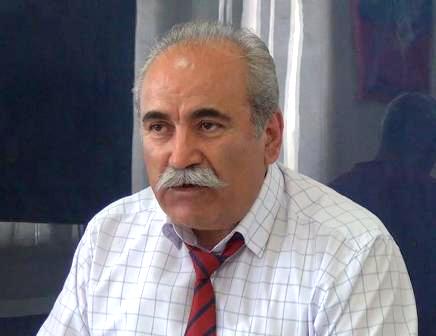After the 1918 Mudros armistice, in order to get rid of the disgraced government of the Young Turks and prevent the possible punitive actions by the victorious Allies, the newly-organized Ahmed Izzet Pasha government, decided to bring the leaders of the Young Turks and the members of the Committee of the Party of “Union and Progress” (Ittihat ve Terakki) before court for involving the Ottoman Empire in the war and organizing Armenian massacres.
According to the decision of 16 December 1918, Enquiry Commissions were set up (General Chairman former Ankara Governor Mazhar Bey) for the purpose of collecting evidence such as encoded telegraphs, official writings, instructions, orders, as well as eye-witness accounts of the massacres of Armenians. The provinces of the Ottoman Empire were divided into ten investigative districts; prosecutors, inquiring judges and secretaries were appointed for each district. A number of ministers of the Young Turks’ Government, party leaders, regional secretaries, attorneys, governors, servicemen and other officials were arrested. On 8 January 1918, Military Tribunals of first, second and third instance were established. During the court hearings, investigation was conducted into the criminal actions of the leaders of the Young Turks’ Government; the members of the Central Committee of the “Union and Progress” Party, the regional secretaries and officials, the special organization that had committed the Armenian slaughters called “Teshkilat ve Mahsuse,” as well as the organizers of the deportation and carnage of the Armenians of Yozgat, Trebizond and Bьyьkdere (a suburb of Constantinople) and Harpoot.
Young Turks trial showed that the deportations and massacres of Western Armenians were not military or disciplinary measures, they were not either limited or had local nature in way how the perpetrator wanted to present, but the actions were deliberate and designed, carried out exclusively by the Central Committee of the Young Turk Party order, and killings were carried out directly by killers and other criminals released from prisons specifically for these purposes.
The trial of the leaders and ministers of the “Union and Progress” party began on 27 April 1919 and continued until 26 June (13 sittings) with intervals. On 28 May, the English Command suddenly exiled 77 prisoners to the island of Malta. The first verdict of the Young Turk perpetrators was reached on July 5, 1919. Four of the 31 criminals (Talaat, Enver, Jemal and Nazim) were sentenced to death in absentia. Some of the remaining 27 were sentenced to
different prison terms, while a small group of accused officials were acquitted because of the lack of evidence. The verdict did not contain a single reference to the criminals who had been banished to Malta.
On 21, 23, 28 June 1919, the trials of the regional secretaries and other officials of the “Union and Progress” party took place. The verdict was reached on 8 January 1920. Three of the 36 people accused were sentenced to 10 years of imprisonment, the others to imprisonment of several years.
The verdict of the perpetrators of Yozgat massacres was reached on 8 April 1919. Yozgat Governor and Governor of Boghazlyan Kemal Bey were sentenced to death. Yozgat’s Police Chief Tefik Bey was sentenced to 15 years of penal servitude.
The verdict of the perpetrators of Trebizond massacres was reached on 22 May 1919. Two of the eight criminals, Governor of Trebizond province Jemal Azmi Bey, and Responsible Secretary of the “Union and Progress” party Naim Bey, were sentenced to death in absentia; the others were sentenced to different years of imprisonment.
The verdict of the perpetrators of the Armenian and Greek massacres of Bьyьkdere was proclaimed on 24 May 1919. All those accused (4 people) received prison terms of several years.
The verdict of the active organizers of the deportation and slaughter of Harpoot Armenians was reached on 14 January 1920. Behaeddin Shakir was sentenced to death, and Responsible Secretary of the Party Resneli Nazim Bey was sentenced to 15 years of penal servitude.
The decisions and reports of the trials of 1919 to 1920 were published in the appendices of the Turkish official newspaper “Takvim-i Vekayi” (“Events Calendar). Though the Trial of Young Turks did not get wide reaction, but the documents (encoded telegraphs and letters) attached to the verdicts attest are unique evidence proving that the Genocide of the Armenians was politically organized and committed act. The documents collected during the court hearings and attached to the verdicts reached prove that the Armenian deportations were aimed at total annihilation of the Armenian population. This plan for a “final solution” was come out
exceptionally on the initiative of the Central Committee of the “Union and Progress” party with instructions and secret orders received from the centre.







